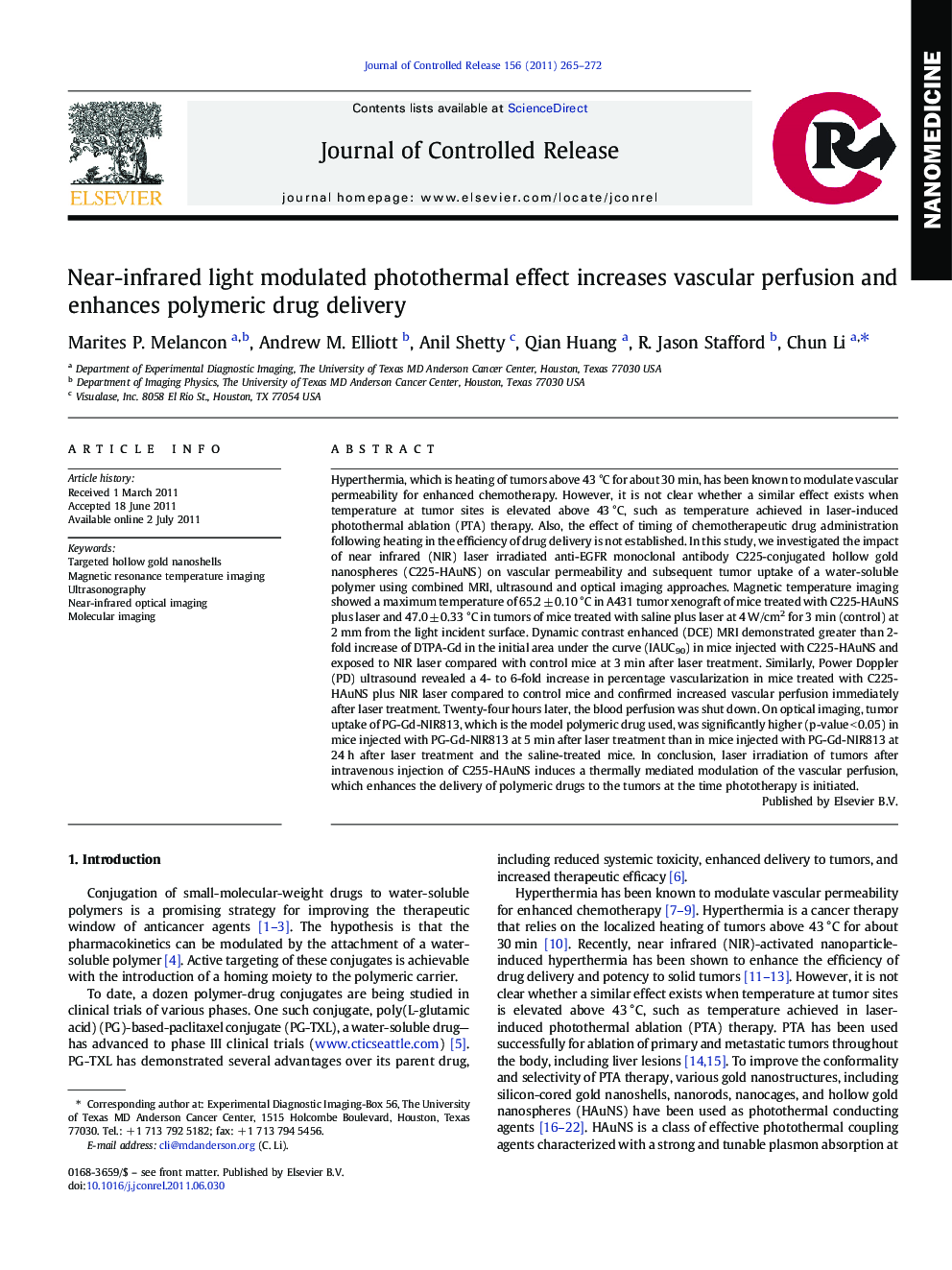| کد مقاله | کد نشریه | سال انتشار | مقاله انگلیسی | نسخه تمام متن |
|---|---|---|---|---|
| 1424839 | 986741 | 2011 | 8 صفحه PDF | دانلود رایگان |

Hyperthermia, which is heating of tumors above 43 °C for about 30 min, has been known to modulate vascular permeability for enhanced chemotherapy. However, it is not clear whether a similar effect exists when temperature at tumor sites is elevated above 43 °C, such as temperature achieved in laser-induced photothermal ablation (PTA) therapy. Also, the effect of timing of chemotherapeutic drug administration following heating in the efficiency of drug delivery is not established. In this study, we investigated the impact of near infrared (NIR) laser irradiated anti-EGFR monoclonal antibody C225-conjugated hollow gold nanospheres (C225-HAuNS) on vascular permeability and subsequent tumor uptake of a water-soluble polymer using combined MRI, ultrasound and optical imaging approaches. Magnetic temperature imaging showed a maximum temperature of 65.2 ± 0.10 °C in A431 tumor xenograft of mice treated with C225-HAuNS plus laser and 47.0 ± 0.33 °C in tumors of mice treated with saline plus laser at 4 W/cm2 for 3 min (control) at 2 mm from the light incident surface. Dynamic contrast enhanced (DCE) MRI demonstrated greater than 2-fold increase of DTPA-Gd in the initial area under the curve (IAUC90) in mice injected with C225-HAuNS and exposed to NIR laser compared with control mice at 3 min after laser treatment. Similarly, Power Doppler (PD) ultrasound revealed a 4- to 6-fold increase in percentage vascularization in mice treated with C225-HAuNS plus NIR laser compared to control mice and confirmed increased vascular perfusion immediately after laser treatment. Twenty-four hours later, the blood perfusion was shut down. On optical imaging, tumor uptake of PG-Gd-NIR813, which is the model polymeric drug used, was significantly higher (p-value < 0.05) in mice injected with PG-Gd-NIR813 at 5 min after laser treatment than in mice injected with PG-Gd-NIR813 at 24 h after laser treatment and the saline-treated mice. In conclusion, laser irradiation of tumors after intravenous injection of C255-HAuNS induces a thermally mediated modulation of the vascular perfusion, which enhances the delivery of polymeric drugs to the tumors at the time phototherapy is initiated.
Figure optionsDownload as PowerPoint slide
Journal: Journal of Controlled Release - Volume 156, Issue 2, 10 December 2011, Pages 265–272